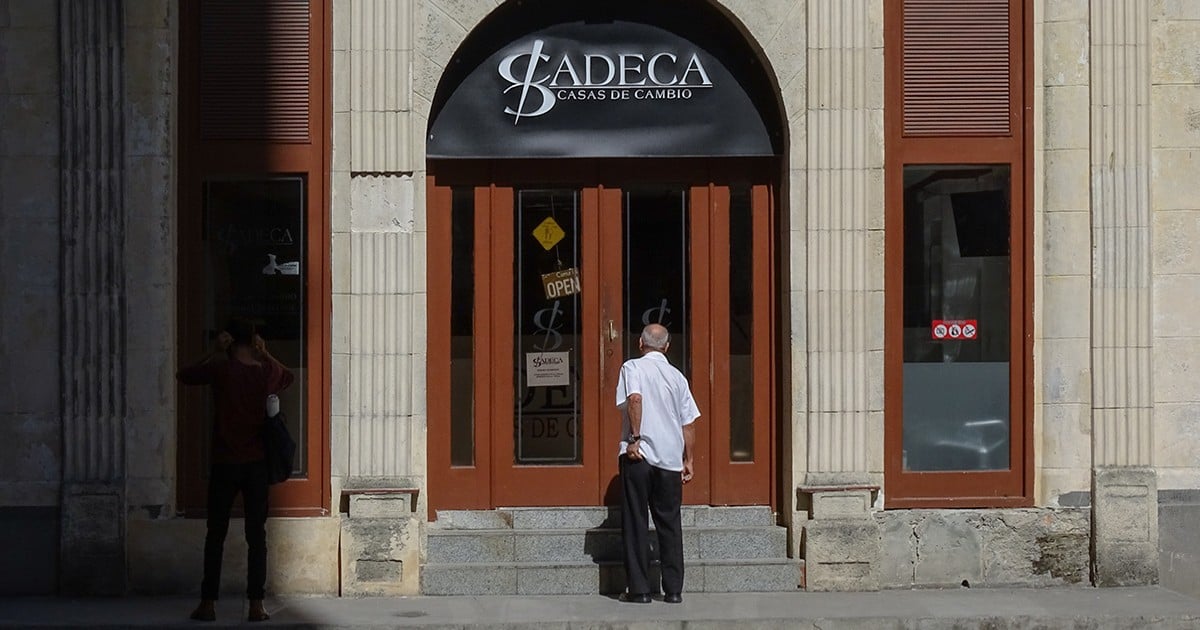Recently, a Cuban economist called for increased state involvement in the island's exchange rate policy. He stated, "Regulation from the monetary authority is crucial for maintaining the stability of the monetary market." But do we really want more state regulation? From this state? Haven't we had enough examples of where state regulation has led us over the past 65 years?
This economist claimed that through entities like the infamous CADECAs, the government managed to stabilize the dollar exchange rate for years. The reality is that this rate was based on a currency created by the Cuban state that supposedly guaranteed convertibility with foreign currencies—the notorious Convertible Cuban Peso (CUC).
Let's be clear, what was the CUC if not a pyramid scheme that ultimately wiped out the savings of millions of Cubans overnight? The government promised, "For one dollar, I'll give you one CUC, and with that CUC, you can buy everything you can buy with a dollar." Well, everything the government offered in its stores at inflated prices. All remittances went into the hands of the government, and they handed out "chavitos," simple promises of payment. Until one day, the government said, "Where I said I would, I won't," and the CUCs were no longer convertible.
That so-called stability of 10 years was achieved at the expense of Cubans' foreign currency and Venezuela's petrodollars. But one day, the government confiscated all the dollars it owed to Cubans. To be clear, the CUCs were nothing more than debt, a promise of payment that the government broke. And the dollars? Squandered during the years of "stability" of the CADECAs.
The Cost of Government Intervention
How many dollars did Cubans lose that day? Many, many millions were erased from the government's "accounting" because those dollars that supposedly backed the CUCs had vanished years ago. Any "stability" that has existed in Cuba has been at the expense of other economies— the USSR, Venezuela, unpaid debts, currency changes, and the theft of remittances.
Today, asking the government to participate in the foreign exchange market is inviting it to pull another dirty trick from its sleeve. We've already seen what happened with the infamous MLC, which was supposed to be the great solution for the Cuban economy. At any moment, they might introduce the Strong Cuban Peso or the Ultra Cuban Peso or any other grandiose name. But it won't be to stabilize the rate; it will be to steal more dollars in exchange for promises.
The Cuban government has had over 60 years to do everything for the island's economy, and everything has been an absolute disaster. Today, they need to step aside and stop interfering. All Cubans, with freedom, will take care of fixing our country. Without them.
Understanding Cuba's Economic Struggles
Here are some key questions and answers to help understand the ongoing economic struggles in Cuba and the role of government intervention.
What was the Convertible Cuban Peso (CUC)?
The CUC was a currency created by the Cuban government that was allegedly convertible with foreign currencies. It was used to stabilize the dollar exchange rate in Cuba but ultimately led to significant financial losses for many Cubans when it was devalued.
How did the CUC affect the Cuban economy?
The CUC created a false sense of stability in the Cuban economy. However, it was essentially a debt that the government eventually defaulted on, leading to the loss of millions of dollars for ordinary Cubans.
What is the role of CADECAs in Cuba's economy?
CADECas are government-run exchange houses that played a significant role in managing the exchange rate in Cuba. However, their operations were part of a broader system that has been criticized for its lack of transparency and stability.
